- Kenmore refrigerator water filters
- Whirlpool refrigerator water filters
- Samsung refrigerator water filters
- GE refrigerator water filters
- LG refrigerator water filters
- Frigidaire refrigerator water filters
- KitchenAid refrigerator water filters
- Maytag refrigerator water filters
- Kenmore Elite refrigerator water filters
- Estate refrigerator water filters
- GE Profile refrigerator water filters
- Amana refrigerator water filters
- Bosch refrigerator water filters
- Dacor refrigerator water filters
- Electrolux refrigerator water filters
How to check and replace a snowblower spark plug
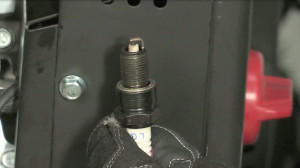

You should check your snowblower’s spark plug after every 25 hours of operation, or at least once every snow removal season.
When to replace a spark plug
Replace the spark plug once per year, or after every 100 hours of snowblower operation.
The snowblower’s spark plug can easily get fouled with debris and deposits during winter. Most snowblowers and snow throwers don’t have an air filter so debris can get into the cylinder and can eventually clog the spark plug gap.
Tasks to complete before you begin checking the snowblower spark plug
Before checking the snowblower spark plug:
Let the snowblower engine cool.
Remove the key.
Disconnect the spark plug wire and ground it against the engine.
Remove the spark plug and check its condition
Warning: Don’t crank the snowblower engine with the spark plug removed.
Follow the steps shown in this video to remove the sparkplug from the snowblower engine and check its condition:
Remove the spark plug
Use a spark plug wrench to remove the spark plug.
Here are some key points about removing and checking the snowblower spark plug:
The spark plug is on the left side of the snowblower engine, above the valve cover.
Caution: When removing the spark plug, beware that if the engine has been running, it will be very hot. Be careful not to touch the muffler.
It’s best to let the engine cool before servicing the spark plug. Spark plug threads can seize in a hot engine cylinder.
To ensure proper engine operation, the spark plug must be properly gapped and free of deposits.
Warning: Do not check for spark with the spark plug removed from the engine. If you need to check your spark plug to see if it’s producing a spark, use a spark plug tester.
Check the spark plug
Visually inspect the spark plug.
Look for deposits or damage to the electrode. Check for a cracked insulator.
Replace the spark plug if it’s fouled, worn or damaged.
Measure the spark plug gap using a feeler gauge.
Correct the gap if necessary by bending the side electrode. You’ll need to set the spark plug gap at 0.020” – 0.030” according to the guidelines in the snowblower engine’s owner’s manual.
Check that the spark plug washer is in good condition. Replace the spark plug if the washer is damaged or worn.
Install the spark plug
Follow these steps to install the spark plug:
Hand thread the spark plug into the engine cylinder to prevent cross-threading the spark plug and damaging the cylinder.
After the spark plug is fully seated, tighten it with a spark plug wrench to compress the washer. Tighten the spark plug to the torque specification shown in the owner’s manual for the snowblower’s engine.
Reinstall the spark plug wire on the spark plug.
Checking and replacing the spark plug is an inexpensive and simple way to make sure the snowblower starts and runs smoothly during harsh winter conditions.
Frequently asked questions about snow blower spark plugs
How do I find the right spark plug for my snowblower?
You’ll typically find the part number for the replacement spark plug in the owner’s manual for your snowblower. Find the part number in the owner’s manual and order the correct spark plug for your snowblower engine.
If you don’t have the owner’s manual for your snowblower, you may be able to find an online version of the owner’s manual on the parts list diagram page for your snowblower model. Key the model number for your snowblower into the search bar at the top of this web page and look for the link to the owner’s manual on the parts diagram page.
If the spark plug part number isn’t in the snowblower owner’s manual, you’ll likely need to look up the replacement spark plug part using the engine model number. The engine model number is different than the snowblower model number. The engine model number is often on a sticker or plate on the engine. Key the engine model number into the search bar at the top of this web page and look up the part number for the spark plug.
Our Sears PartsDirect website often provides the engine parts diagram on the same page as the snowblower parts diagram for the snowblower model. If you can’t find the engine model number on your snowblower, try to find the engine parts using the model number for your snowblower. Key your snowblower model number into the search bar at the top of this webpage. Select the engine component on the parts diagram page to view engine parts. Order the replacement spark plug for your engine.
What is the torque specification for the sparkplug in my snowblower engine?
Find the spark plug torque specification in the owner’s manual for your snowblower engine. Common snowblower engine manuals instruct you to torque the sparkplug to around 20 ft-lbs.
Not all snowblower engine manuals provide a specific torque specification for spark plugs. Many snowblower engine manuals instruct you to “tighten 1/8 - 1/4 turn after the spark plug seats to compress the washer.”
What happens if I don’t tighten the spark plug properly?
A loose spark plug can prevent the engine from starting. It can also cause the engine to run rough. Additionally, an improperly tightened spark plug can become very hot and may damage the engine.
Why does my snowblower spark plug keep fouling?
Carbon deposits on your snowblower spark plug can be caused by:
Rich fuel mixture from a faulty carburetor.
Ignition system timing problems.
Faulty ignition system.
Prolonged idling.
Using the wrong spark plug.
Oil deposits on the spark plug can be caused by overfilling the engine with oil or worn piston rings.
How do I test a spark plug?
Install the spark plug in the engine and then connect a spark plug tester to check the ignition system. Connect the tester boot to the spark plug and connect the spark plug wire to the other end of the tester. Pull the starter rope or press the starter button and see if the tester sparks.
If the tester doesn’t spark, you could have a bad spark plug or an ignition system failure.
If the tester does spark, then the engine could have a fuel or compression problem.
Troubleshooting and fixing a snowblower problem may become too complicated for you to complete on your own. When that happens, schedule service and have a Sears Technician diagnose and repair your snowblower.
Symptoms for gas snowblowers
Choose a symptom to see related snowblower repairs.
Main causes: broken shear pins, worn or loose auger drive belt, auger drive cable failure, damaged auger, bad gear case…
Main causes: clogged chute, snow build-up in auger housing, broken auger shear pins, auger drive belt needs adjustment, …
Main causes: stale gas, clogged carburetor, clogged or broken fuel line, dirty spark plug, bad rewind starter, incorrect…
Main causes: punctured tire, damaged rim…
Main causes: clogged chute, damaged auger blades, broken shear pins, worn auger belt, damaged gear case, engine problems…
Things to do: replace the spark plug, change the oil, rebuild the carburetor, adjust valve lash, adjust or replace the b…
Main causes: dirty carburetor, clogged fuel filter, dirty spark plug, incorrect valve lash, leaky engine gaskets…
Main causes: dirty carburetor, stale fuel…
Main causes: loose drive clutch cable, damaged drive clutch cable, worn friction disc, scraper blade scraping the ground…
Repair guides for gas snowblowers
These step-by-step repair guides will help you safely fix what’s broken on your snowblower.

How to replace a snowblower fuel filter
Replace the fuel filter on your snowblower if it's clogged or damaged.…
Repair difficulty
Time required
15 minutes or less

How to replace a snowblower shave plate
Follow the 7 easy steps in this repair guide/video to replace a worn out shave plate on your snowblower.…
Repair difficulty
Time required
15 minutes or less
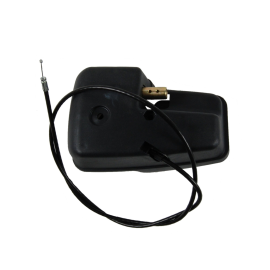
How to replace a snowblower chute control gearbox assembly
Replace the chute control gearbox on your snowblower if it's stripped or damaged.…
Repair difficulty
Time required
15 minutes or less
Articles and videos for gas snowblowers
Use the advice and tips in these articles and videos to get the most out of your snowblower.
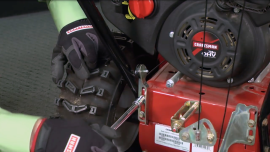
Find out how to clear chute obstructions, replace shear pins and adjust or replace your auger engagement cable if your s…
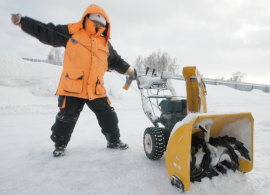
Find easy DIY tips to fix your snowblower when it won't start…
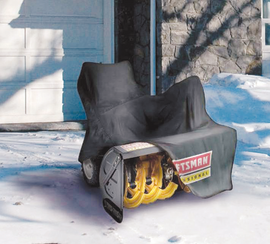
Protect your snowblower's engine and body by preparing it for after-season storage.…